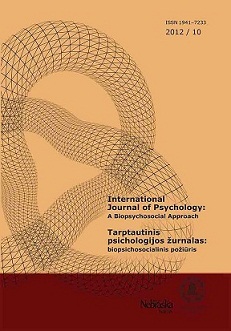Teacher Attitude and Needs Assessment Concerning the Use of Student Portfolio Assessment in Thailand’s Educational Reform Process
Teacher Attitude and Needs Assessment Concerning the Use of Student Portfolio Assessment in Thailand’s Educational Reform Process
Author(s): Suwimon Wongwanich, Kamonwan TangdhanakanondSubject(s): Psychology
Published by: Vytauto Didžiojo Universitetas
Keywords: portfolio; attitude; needs assessment; education reform; portfolio; nuostatos; poreikių įvertinimas; švietimo reforma
Summary/Abstract: Background. Education reform in Thailand includes curriculum reform, teaching and learning reform, and assessment reform. Regarding the assessment reform, a new student learning assessment method including portfolio assessment is introduced. However, teachers did not change student learning assessment methods and student achievement in the five main subjects remained at a low level in the first decade of educational reform. This provides a good opportunity to study how teachers view the use of and how they see a need for student portfolio assessment. Purpose. The purposes of the present study were (a) to examine teachers’ attitude towards the use of student portfolio assessment in the educational reform process, and (b) to examine teachers’ needs concerning the use of student portfolio assessment in the educational reform process. Material and Methods. Two hundred and forty two elementary school teachers participated in this study. Questionnaires were sent out to collect data. Results. Results indicated that, overall, teachers had positive attitude towards the use of student portfolio assessment but they also had needs in all of the steps of using student portfolio assessment. Teachers had most critical needs in the use of student portfolio assessment in the step of selecting products and reflecting on the selected products, followed by the step of revising and evaluating products, and the step of utilizing portfolio assessment results, respectively. Conclusions. Workshop training sessions on the use of student portfolio assessment should be provided for teachers. The step of selecting products and reflecting on the selected products, the step of revising and evaluating products, as well as the step of utilizing portfolio assessment results should be heavily emphasized in the training sessions. Problema. Tailande vykdoma švietimo reforma siekia reformuoti mokymo turinį, mokymo ir mokymosi bei mokymosi pasiekimų įvertinimo metodus. Portfolio metodas siūlomas kaip vienas iš galimų mokinių pasiekimų įvertinimo būdų. Tačiau mokytojai nenoriai keičia įprastus mokinių įvertinimo būdus naujais, nors dešimtmetį vykdomos reformos pagrindinių penkių mokymosi dalykų rezultatai išlieka žemi. Todėl verta gilintis, kaip mokytojai vertina portfolio metodą ir kaip supranta tokio vertinimo poreikį. Tikslas. Šiuo tyrimu keliami tikslai: a) įvertinti mokytojų nuostatas į portfolio metodo taikymą mokinių mokymosi pasiekimams vertinti vykstančios švietimo reformos kontekste; b) įvertinti mokytojų poreikius, susijusius su portfolio metodo taikymu mokinių mokymosi pasiekimams vertinti. Metodikos. Tyrime dalyvavo 242 pradinės mokyklos mokytojų. Duomenims rinkti pasitelkti klausimynai.
Journal: Tarptautinis psichologijos žurnalas: biopsichosocialinis požiūris
- Issue Year: 2012
- Issue No: 10
- Page Range: 71-88
- Page Count: 18
- Language: English

